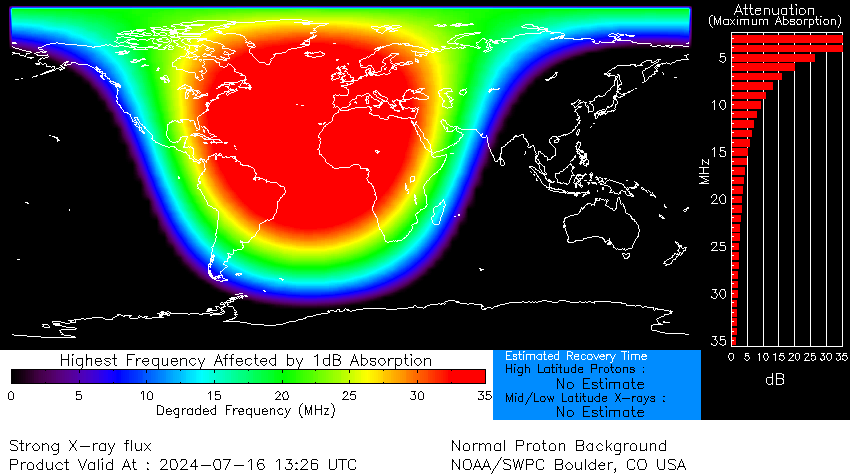NOAA 3738, the largest sunspot group currently on the solar disk, started a new episode of enhanced solar flare activity from around 12UTC on 13 July, culminating in an X1.2 flare that peaked on 14 July at 02:34UTC. The location was in the trailing portion of this active region, whereas the other flares produced by NOAA 3738 took place near the main leading sunspot, where some magnetic delta structure had developed. The SDO imagery shows a white light image (left) of the region, as well as a magnetogram (right), with white indicating positive magnetic polarity (field lines coming out of the Sun), and black representing negative magnetic polarity (field lines returning into the Sun). The extreme ultraviolet ilage is from SDO/AIA 094 near the time of the flare's peak.
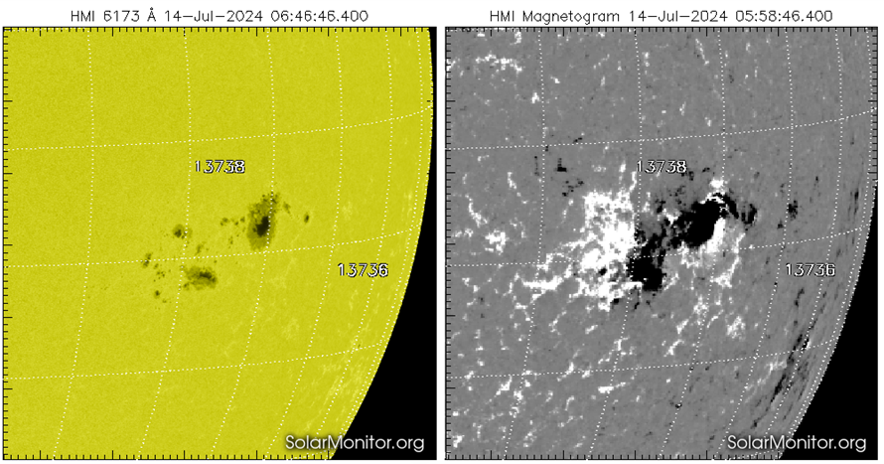
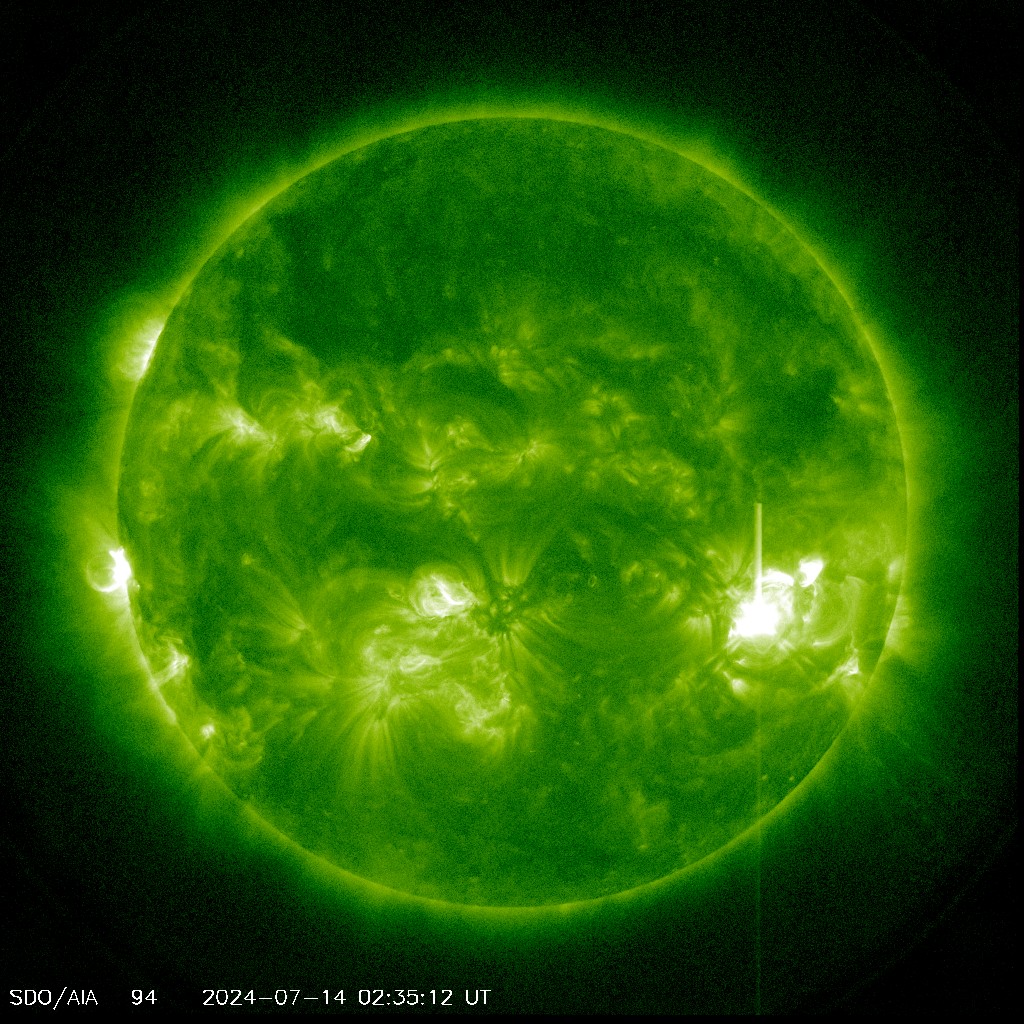
The eruption apparently was not associated with coronal dimming or a coronal mass ejection (CME). Space weather effects from the x-ray flares were limited to some minor disturbances of HF Com on the Earth's dayside (DRAP; map underneath). The flare itself was associated with radio bursts on various frequencies at and above 2 GHz (NOAA/USAF network). NOAA 3738 is expected to produce further M-class flaring with a chance on another X-class flare.
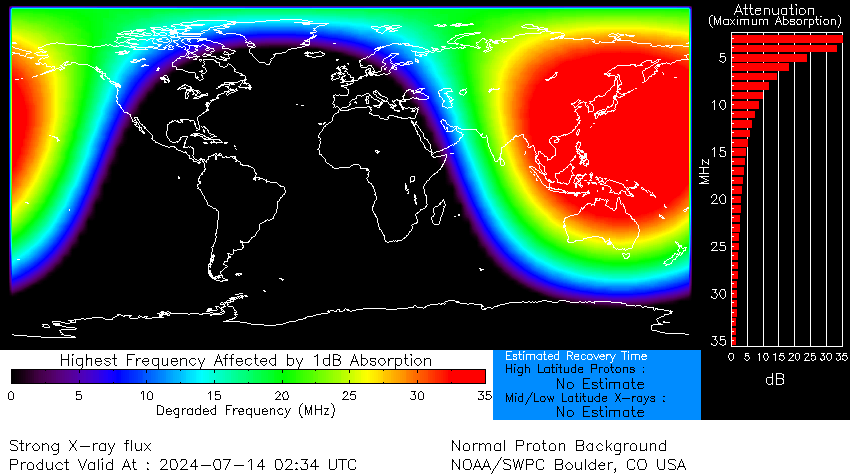
Additional material
Compilation in white light of NOAA 3738's evolution on 7-10-13 July, as well as a clip spanning the period 6-15 July.
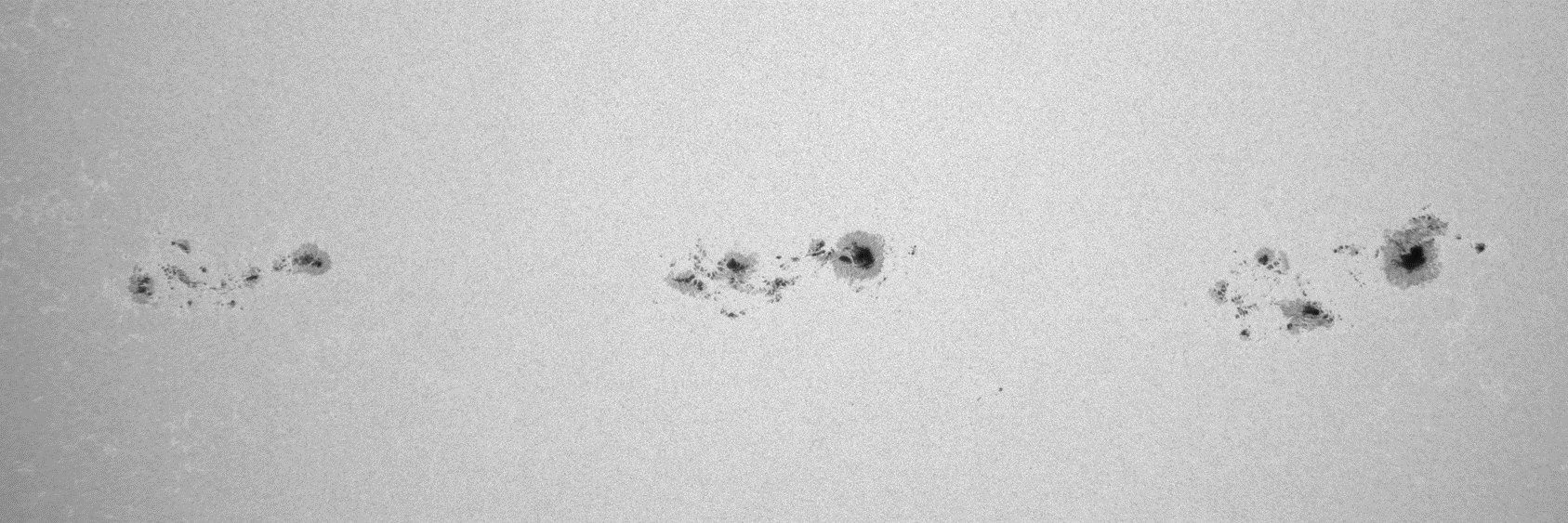

Clip in EUV (SDO/AIA 094) showing the eruptive activity during 13 and 14 July which mainly took place in and near NOAA 3738.

UPDATE 2 - 16 July at 15:00UTC
NOAA 3738 has produced another X-class flare, this time an X1.9 at 13:26UTC which is slightly more intense than the X1.2 this active region produced early on 14 July. The region is very close to the Sun's west limb, making an accurate assessment of its magnetic structure difficult. The image underneath is from GOES/SUVI 131.
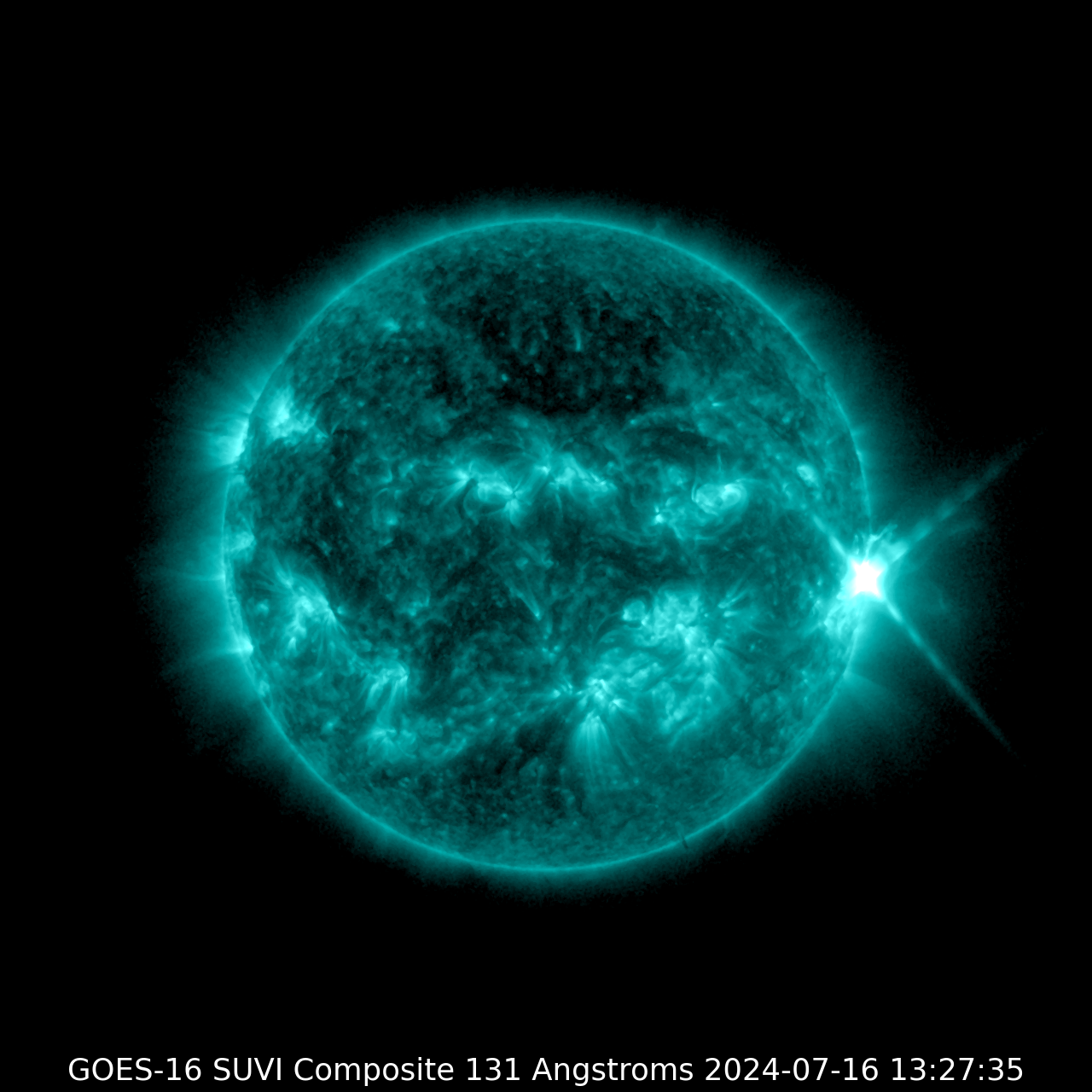
Radio busts were strong in the low and high end of the observed radio frequencies (NOAA/USAF network). A textbook Type II radio burst was observed by the Humain Radioastronomy Station , as shown in the spectrogram underneath (the GOES x-ray flux is on top). This indicates that a coronal mass ejection (CME) may be associated with this eruption, however, preliminary analysis by the SIDC forecaster reveals that it is unlikely that this CME has an earth-directed component. Nearly two hours after the flare, the proton flux is still at background levels (GOES). This merit further watching.
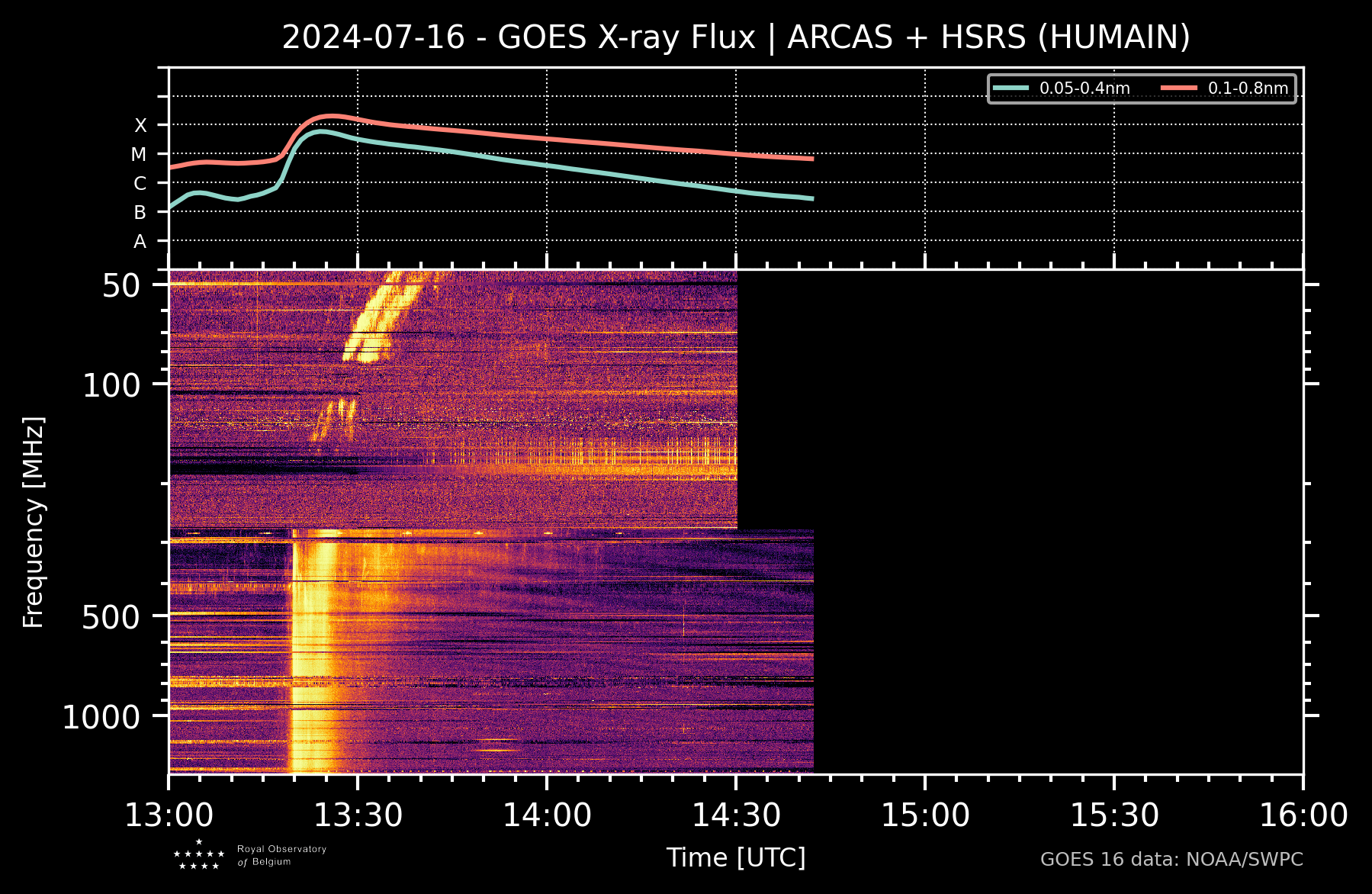
Space weather effects from the x-ray flares were limited to some minor disturbances of HF Com on the Earth's dayside, so mainly over the Atlantic Ocean, Europe and Africa, and the eastern portion of Canada/USA and South-America (DRAP; map underneath). An advisory to the civil aviation for disturbed HF Com (High Frequency Communications) from the solar flare has been sent by PECASUS. NOAA 3738 is expected to produce further M-class flaring with a chance on another X-class flare as it rounds the Sun's west limb over the next 24-36 hours.
